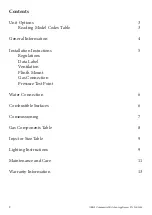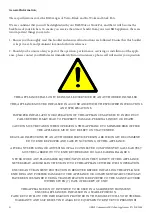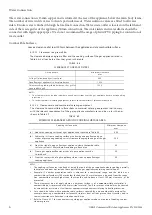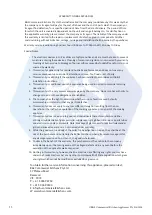
5
© B&S Commercial Kitchen Appliances Pty Ltd 2016
Installation Instructions;
Regulations;
The appliance must be installed only by authorised persons and in accordance with the manufacturer’s instal-
lation instructions, local gas fitting regulations, municipal building codes, AS 5601.1 2013 – Gas Installations
and any other health and safety regulations, local authority, gas, electrical any other statutory regulations.
Data Label;
The data label is located on the front of the appliance. This appliance is suitable for Natural Gas and LPG.
Please ensure that the gas supply matches the Data Label ensuring that the gas supply is correct for the appli-
ance being installed and that adequate supply pressure and volume is available – refer to appliance data plate
for MJ/hr consumption, injector sizes of main burners/pilots, etc.
Ventilation;
It is strongly recommended that the appliance is installed under an extraction hood. Ventilation must be in
accordance with AS5601 - Gas Installations. In general, the appliance should have adequate ventilation for
complete combustion of gas, proper flueing and to maintain temperature of immediate surroundings within
safe limits. NOTE: Health Authorities or national Building Codes may require an exhaust system to be fit-
ted where these gas appliances are installed. Such systems should comply with AS/NZS 1668.1 and AS/NZS
1668.2.
Plinth Mount;
When the unit is installed on a plinth, the plinth depth must be no greater than 700mm, otherwise it may
disrupt airflow to the burner.
Gas Connection;
The gas connection is male 3/4” BSP and is situated at the rear of the appliance below the main body frame.
The number of gas inlets corresponds to the number of wok support rings the appliance is fitted with.
All piping must be compatible and suitable for use with the gas being connected, the pressure to which they
will be subjected, and the environment in which they will be installed. It must also be of sufficient diameter
to ensure adequate gas supply to the appliance. All piping should be thoroughly inspected to ensure it is free
of debris or moisture.
When the unit is fitted with castor wheels, it must be connected using a flexible hose certified to AS/NZS
1869. The hose must be of adequate diameter, and not exceed 3 metres in length. The hose must be perma-
nently connected to the unit, and have either a quick-connect device or a manual shut-off valve and union fit-
ted at the inlet end of the hose assembly. If a quick connect device is located at the appliance end of the hose
assembly, there must be a manual shut-off valve connected at the inlet end of the hose assembly.
Pressure Test Point;
All appliances that are dispatched from our factory are tested and adjusted according to the specifications for
their required gas type. The regulator must be adjusted at the test point on the regulator, using a calibrated
manomenter at time of commissioning to verify correct gas pressure. Ensure the manometer is accurate and
has been zeroed prior to adjusting regulator spring tension. The test point pressure should be adjusted to 1.00
kPa – Natural gas or 2.60 kPa – LPG with the burners operating at maximum.































